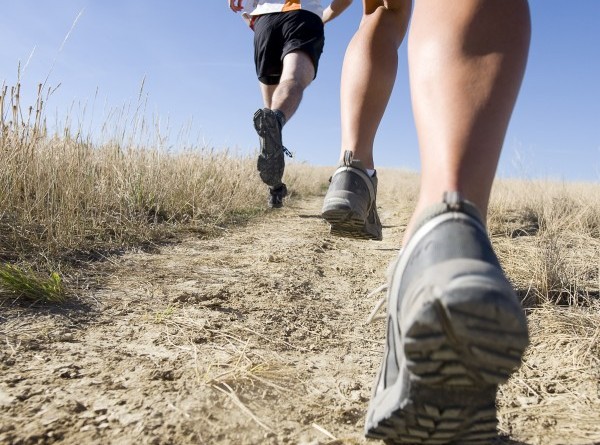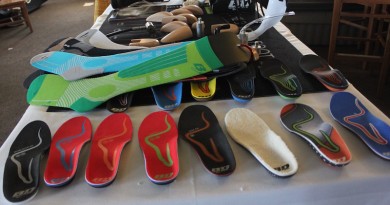How to Help A Hamstring
Q: “My hamstring kills. Is that a muscle pull, or something worse?” Our medical experts tell you what to do.
By Dr. David Lisle
Muscle pulls or more accurately strains are the most common injury sustained in sports. A muscle strain typically occurs suddenly with rapid onset of pain. Most often, the thing that sets it off is a rapid contraction of the muscle group while it is getting longer. One of the most common occurrences is a hamstring strain that happens when the leg is swinging forward and the heel hits the ground at the same time the muscle rapidly contracts. The muscle stretches to the point of failure and a strain occurs.
The most common muscle strains are the hamstring, the quadriceps (muscle group in the front of the thigh) and the gastrocnemius (the main calf muscle). Other less common muscle strains are the hip flexors (muscle group in the front of the hip) and gluteus maximus (the muscle in the buttocks). The weakest point in the muscle and tendon is the myotendinous junction which means where the muscle blends into the tendon. This region is typically at the middle of the muscle belly. Just for clarification, muscles get strained and ligaments get sprained.
Diagnosis of a muscle strain is usually quite straightforward as a patient will describe a specific event where the pain started suddenly and the pain is located directly at the middle of the muscle belly. Often a patient will describe an inability to continue to bear weight or difficulty walking and trouble with stairs. On examination, the muscle belly will be swollen and there is often bruising. There is often tenderness at the region of injury. In more severe injuries, there may be a defect or empty space where the muscle should be. This represents a high grade muscle strain. When the injury is in the middle portion of the muscle, it is most often a strain. However, if the pain and injury location is closer to the bone, it could be an avulsion or a pulling away of the tendon from the bone. This typically causes more severe loss of function of the joint. If an avulsion is suspected, it’s a good idea to have x-rays to be sure that a piece of bone hasn’t been pulled off with the tendon.
There are a grading system for muscle strains: mild or grade 1 where the loss of function and pain is minimal, moderate or grade 2 where the muscle strain creates more pain and has some inability to function and lastly, severe or grade 3 where there is significant loss of function. There is evidence to suggest that if there is a need for crutches, the recovery will be prolonged. This seems like common sense. Most muscle strains will take 4 to 6 weeks to heal. With proper treatment, the recovery can be closer to the 4 week time frame than the 6 week time frame. The key to treating muscle strains is reducing activity level and resting the muscle group. Often immobilization of a calf strain with a walking boot can help speed recovery.
For hamstring and quadriceps injuries, crutches may be necessary. Keep in mind, prolonged immobilization of over 14 days should be avoided. Initially, keep from using the muscle until the pain and swelling is reduced enough to allow your to return to everyday activities. The RICE principle (rest, ice, compression and elevation) is also helpful for muscle strains and should be started immediately after injury. Physical therapy to help with return of motion and strength can be critical to speed recovery. Returning to sports should only happen when there is full, pain-free motion and there is no pain with normal activities such as stairs and walking.
All muscle strains have a high rate of recurrence. Rushing back to activities too soon can lead to reinjury and increasing the total time for recovery. Prevention of muscle strains is challenging and there are conflicting reports on whether stretching is helpful or potentially harmful. There is evidence to suggest that performing a brief warm up followed by a stretching program about 15 minutes prior to physical activity is safe and may reduce the chance of muscle strain. Whenever there is sudden onset pain in a muscle group with limitations in motion, get evaluated by urgent care or a sports medicine professional. —Dr. David Lisle

Dr. David Lisle is a sports medicine physician in Burlington, and an assistant professor in the Department of Orthopaedics and the Department of Family Medicine at the University of Vermont College of Medicine. He is the director for the sports medicine curriculum in the University of Vermont Family Medicine residency program. Dr. Lisle serves as the team physician for St. Michael’s College, the Vermont Lake Monsters Single A baseball affiliate and several Burlington-area high schools. He is also an assistant team physician for University of Vermont athletics.




